12 days of SNOLAB science
Over the past few weeks, we have been sharing #12DaysOfSNOLABScience on social media, focusing on some less well-known bits of information about the lab and the experiments we host. All twelve days are compiled here, for some science-themed holiday reading as you deck the halls (or drifts).
One Nobel Prize
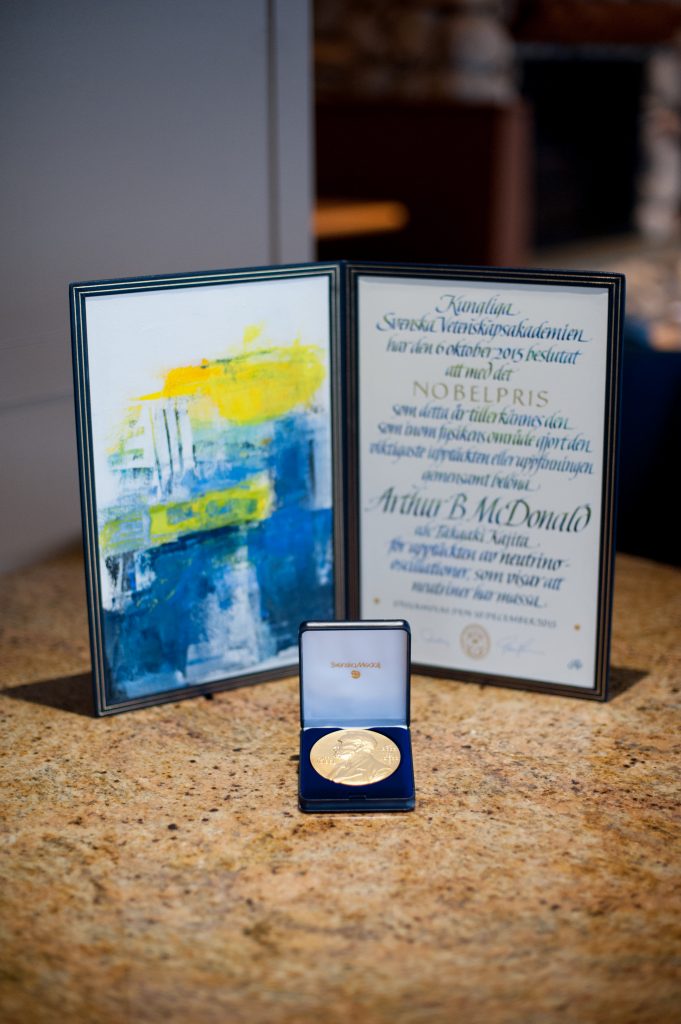
Dr. Arthur B. McDonald was awarded the Nobel Prize in Physics in 2015 for discoveries made by the Sudbury Neutrino Observatory (SNO). SNO was the first physics experiment set up in the underground lab that eventually expanded to become SNOLAB. Along with Dr. Takaaki Kajita (who led the Super-Kamiokande experiment), McDonald received the award for discovering neutrino oscillation: that neutrinos can change flavour as they travel from the Sun to the Earth. This discovery solved the solar neutrino problem and proved that neutrinos have a non-zero mass.
Two kilometres of rock shielding
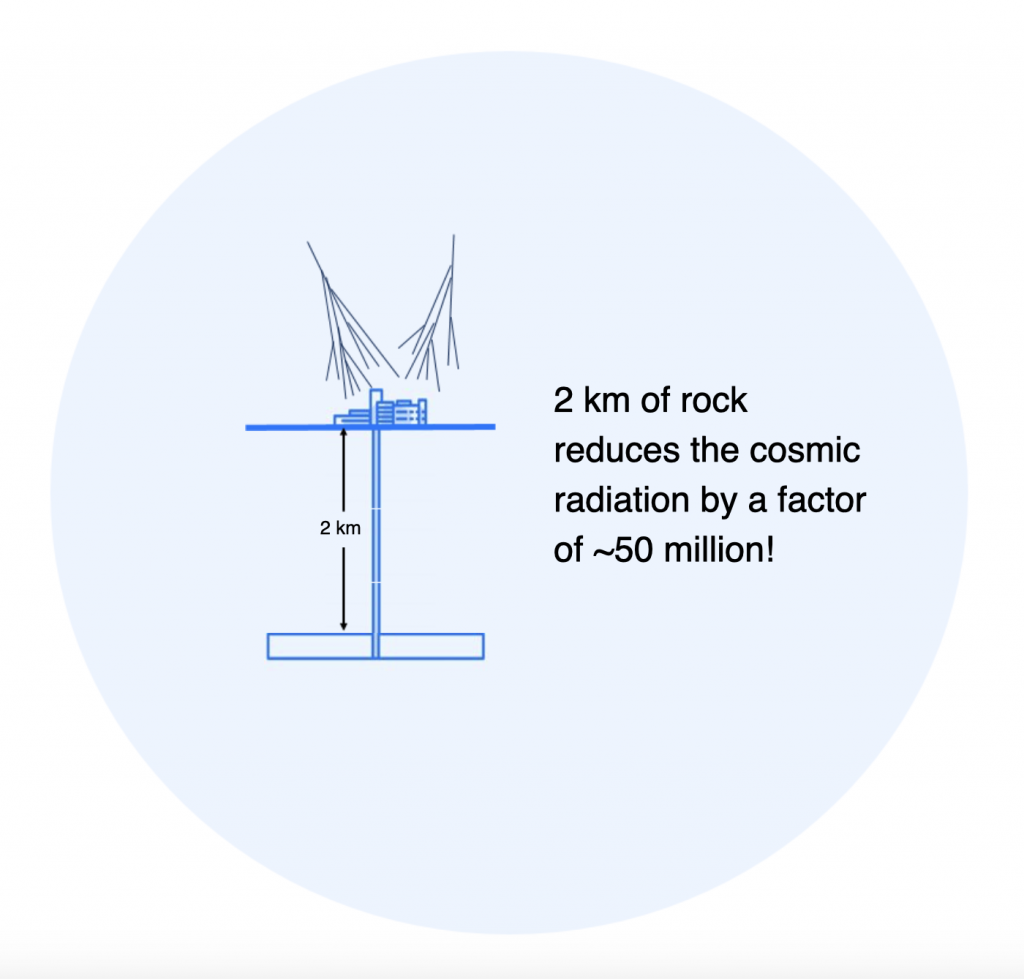
SNOLAB’s underground lab is located 2 km below Earth’s surface, in Vale’s Creighton Mine. Most of the experiments at SNOLAB are searching for very rare particles and interactions so the detectors are built to be incredibly sensitive. Background radiation on Earth’s surface would also interact with these sensitive detectors, making it impossible to see the signal scientists are looking for (kind of like listening for a pin drop at a rock concert). Rock acts as a great shield for this unwanted background radiation – the two kilometres between SNOLAB and the surface mean experiments can successfully detect the interactions they are looking for.
Three tonnes of argon
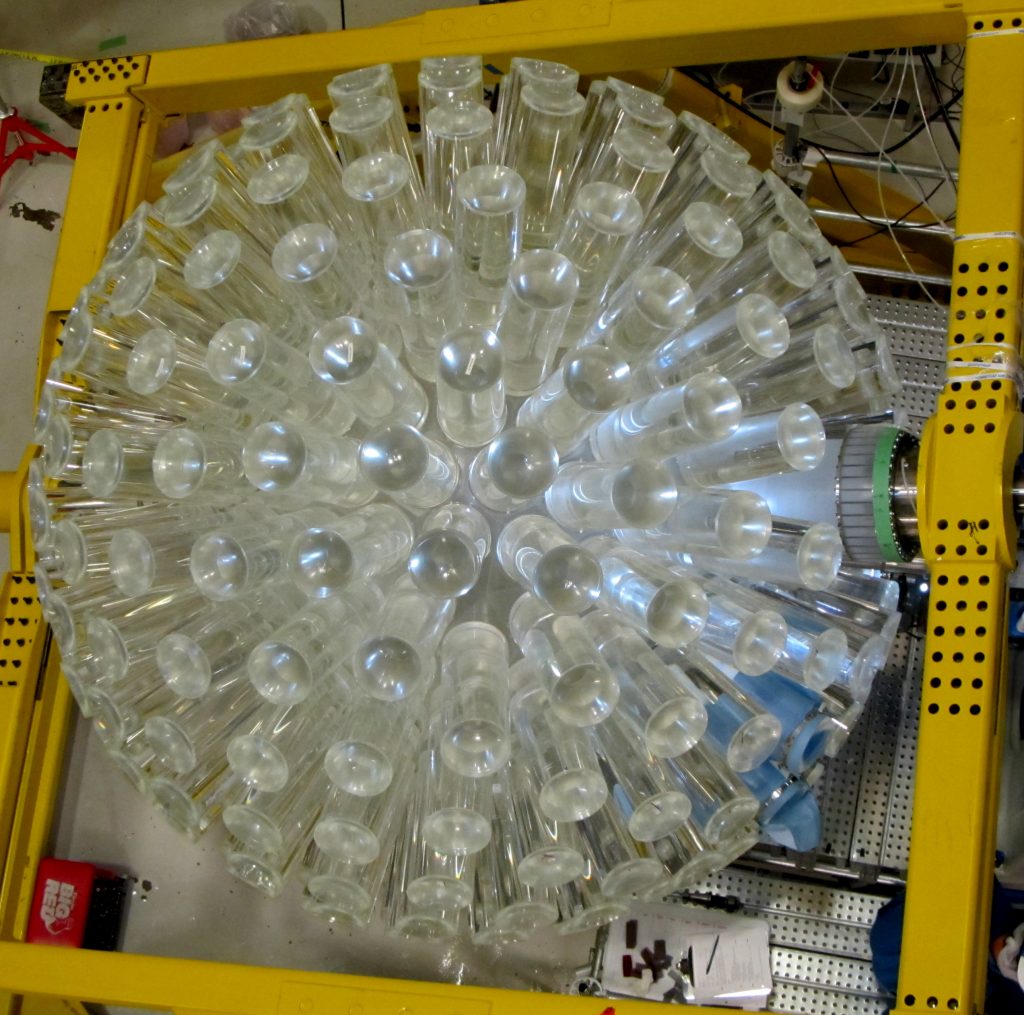
DEAP-3600 is a dark matter detector that uses liquid argon as its target material. The acrylic sphere at the centre of the detector is 170 cm in diameter and holds 3.6 tonnes of liquid argon. Argon is a gas at room temperature, so to keep it liquid, the detector is kept at -180ºC. Liquid nitrogen is used to help keep the argon cool – if it were to boil, it would take up 600 times as much volume!
Four deepest flush toilets in the world
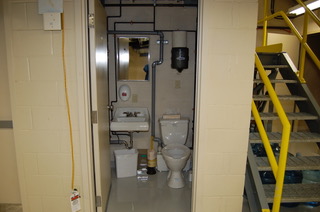
Located 2 km underground, there are some logistical challenges to plumbing. SNOLAB is home to the deepest flush toilets in the world. Just outside the lab doors, in the mine drift, SNOLAB has an underground sewage treatment plant. Wastewater leaving the lab is treated by a microbe patented and owned by the City of Greater Sudbury that digests solid wastes. Following this, the waste is dehydrated into odourless blocks that are shipped out of the lab. The remaining greywater is clean enough to be released into the mine water disposal system. This saves an enormous amount of energy that would have to be used to pump wastewater back to the surface to be treated. During times when there is little activity in the lab, like over the holidays, the microbes are fed dog food to keep them alive until we return.
Five golden gamma counters
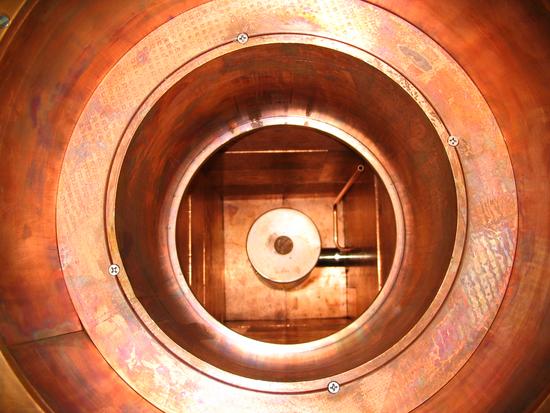
The low background facility at SNOLAB is presently equipped with five high purity germanium (HPGe) detectors, also called gamma counters. While they’re not actually golden, they’re essential for astroparticle rare event searches such as dark matter and neutrinoless double beta decay. The HPGe detectors are used to screen materials that are used in the lab – everything from the paint on the walls to the materials the detectors themselves are made of. The HPGe detectors measure radiation coming from the materials in the form of gamma rays, allowing us to select the materials with the lowest amounts of radioactive contamination.
Six pieces of lead shielding for NEWS-G
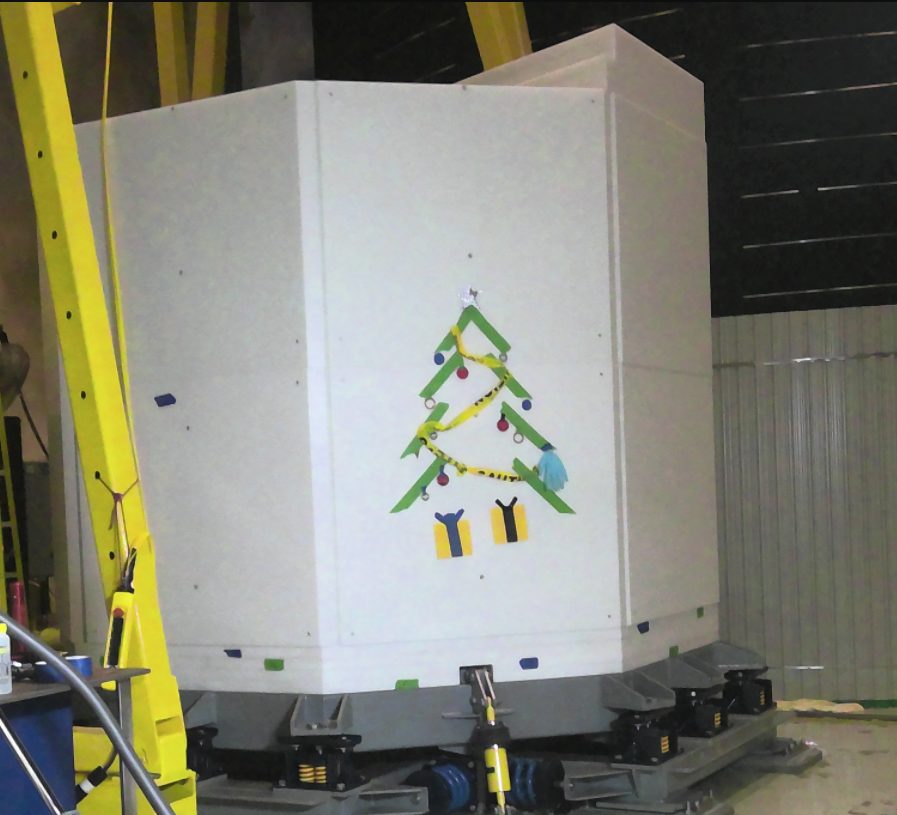
The NEWS-G experiment has six pieces of lead shielding that surround the detector and further reduce backgrounds in the data. There are four pieces that form sides, and then a top and a bottom. The bottom piece is the single heaviest object SNOLAB has ever shipped underground – combined with the stand it was transported on, it weighed about 75,000 pounds! Many experiments (and some counters in the low background lab) use lead for shielding, but it’s usually in the form of more portable blocks instead of multi-thousand-pound chunks. Lead works to shield experiments the same way a lead apron shields you during a dental x-ray.
Seven pieces of PPE
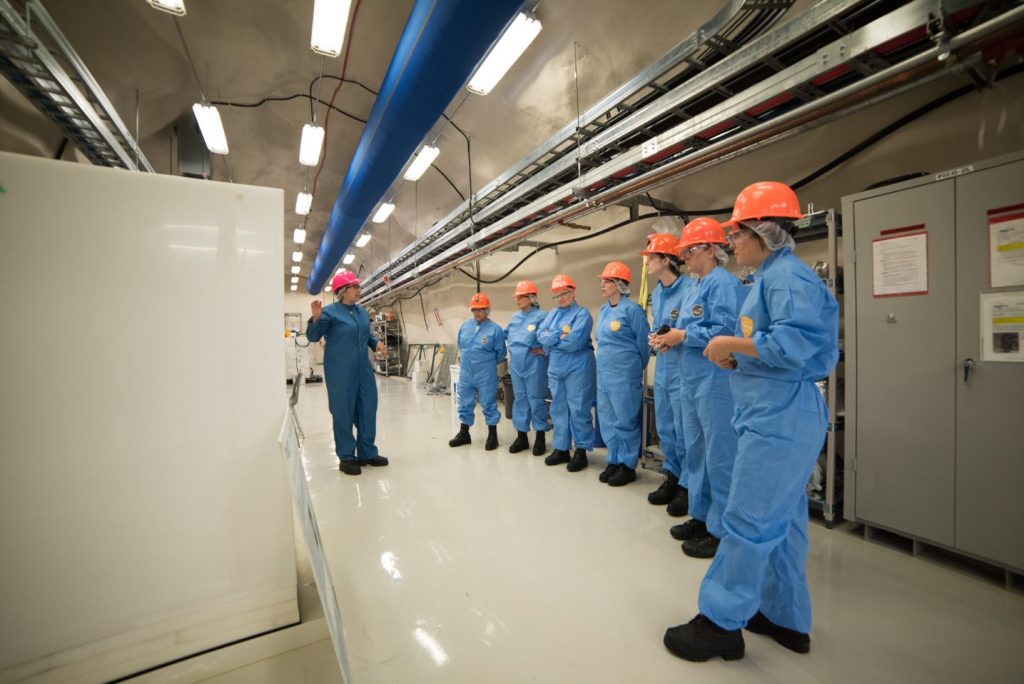
When you get to SNOLAB’s underground lab, you switch from your mining PPE to clean room PPE (and take a shower in between). There are seven items that must be worn in the underground lab: Two shoes with metal toe guards, a special onesie that prevents lint and skin from escaping (sometimes disposable Tyvek suits are used for visitors), a hairnet, a hardhat, safety glasses, and a mask. Depending on what type of work people are doing underground, there is sometimes additional PPE needed (inside the SNO+ vessel, people had to wear life jackets). The seven basic PPE items keep people safe and help keep our clean lab clean. Masks are a new addition to our PPE protocol as of this year. This photo is from a tour last year.
Eight steps of water purification
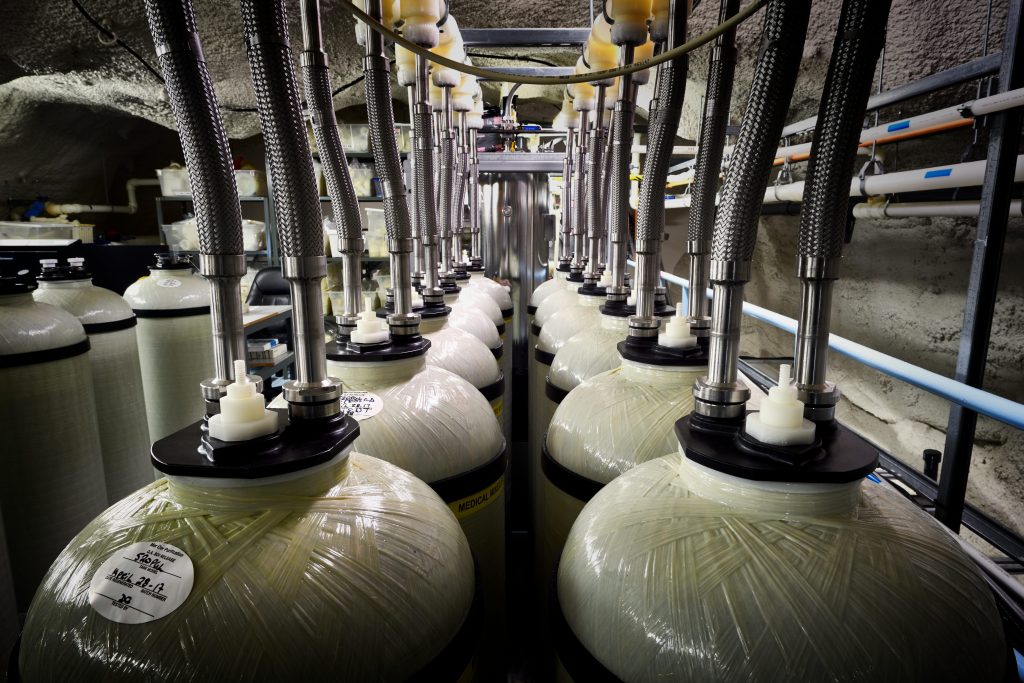
Originally designed for SNO, the ultra-pure water (UPW) plant is now used by many experiments for shielding, to clean materials, and even to take data. But what exactly is ultra-pure water, and how do you make it?
1) First, mine service water is de-aerated and filtered at the SNOLAB water pretreatment area.
2) Next, the water passes through charcoal filters to remove organic material and free chlorine.
3) The water then goes through softeners to exchange divalent ions like calcium and magnesium.
4) Reverse osmosis: after more filtration the water passes through a 3-loop reverse-osmosis unit (RO) to produce high purity water.
5) Water then flows through a UV treatment where any remaining organic compounds are broken into ionic form.
6) Next, an ion exchange process removes any dissolved, ionized impurities.
7) A custom-designed Process Degasser (PDG) is used to reduce the oxygen and radon levels in the water by factors of about 1000 and 50, respectively.
8) N2 re-gas: water is then re-gassed with pure boil-off nitrogen to prevent degassing of materials when the water is used.
The final product is UPW – free of particulates, organic material, ions, and gases.
9000 PMTs
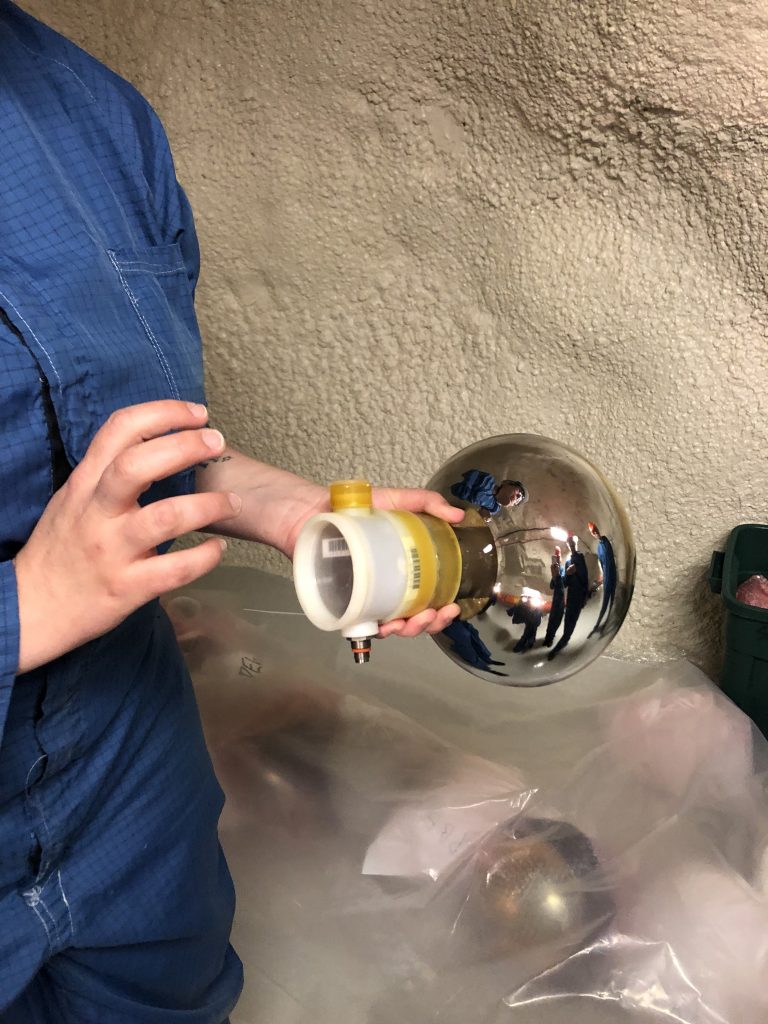
Several of the experiments at SNOLAB use light to detect things that we cannot see, such as neutrinos and dark matter. These detectors use a scintillating fluid and photomultiplier tubes (PMT), or extremely sensitive light detectors. The SNO+ experiment, pictured, is equipped with over 9000 PMTs.
When a particle of interest, in this case a neutrino, enters the detector and interacts with scintillator, it releases a small flash of light, imperceptible to the human eye. These PMTs are sensitive enough to detect even a single photon. When the photon hits the surface of the PMT, it releases an electron inside the tube, which gets reflected and amplified repeatedly. The amplification is a cascading effect. When the electron beam reaches the end of the tube, it is converted into an electrical signal, which can then be read by a computer and sent to scientists to analyze. The signal the computer receives is proportional to the original photon light.
Ten whiffle trees
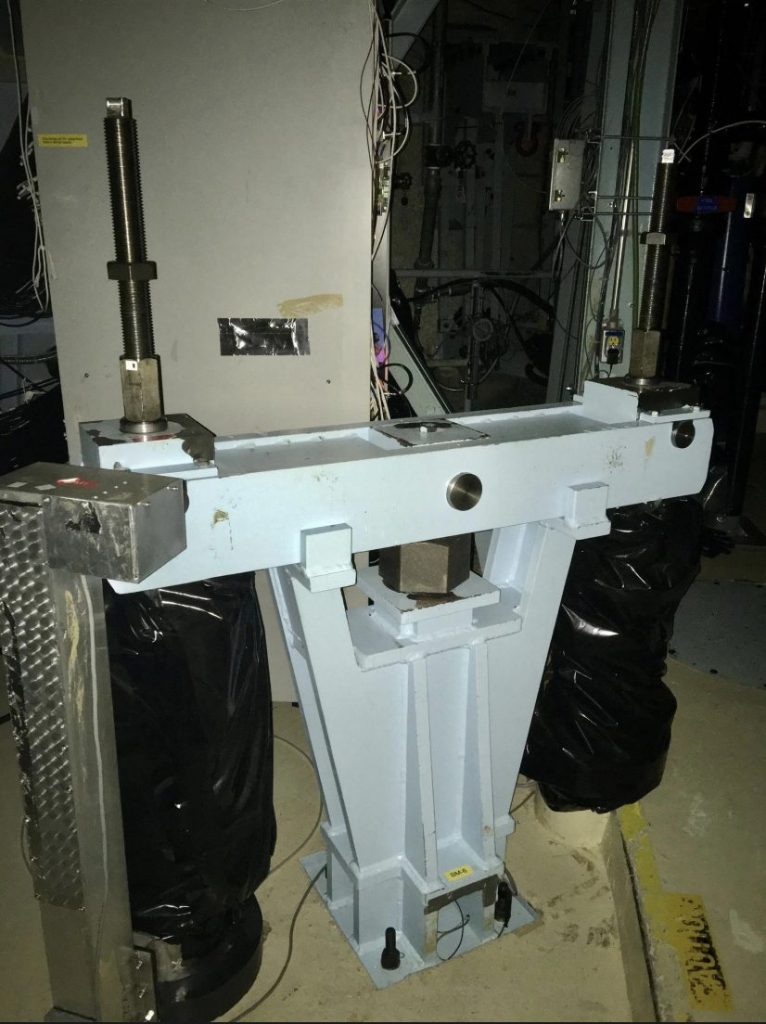
The SNO+ detector is suspended in its cavity, hanging from the deck above and anchored to the floor below. The tension of the ropes needs to be carefully monitored, to keep the vessel even and in the right position. The ropes that anchor it to the deck above are held by a complex system that helps to evenly distribute the weight of the vessel across the deck. One component of this system is called a whiffle tree (the blue metal piece in the photo). The big bolts on the outside can be adjusted to help properly balance the tension in the ropes, which requires A Very Large Wrench TM.
Eleven shower stalls
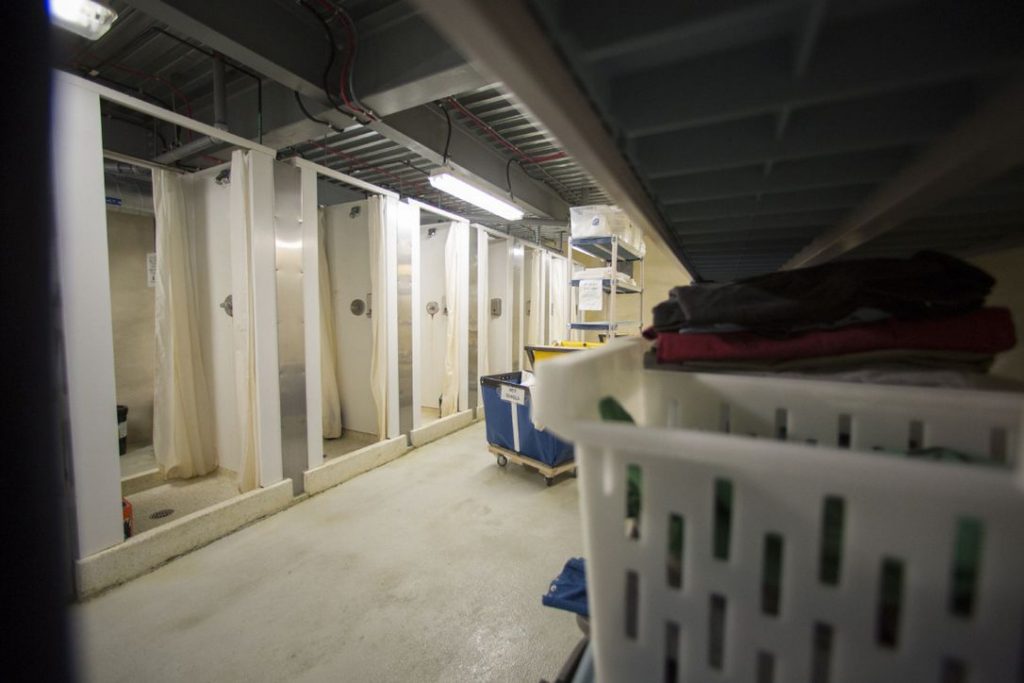
Everything and everyone entering the underground lab needs to be washed – the mine dust contains trace amounts of uranium and thorium, which would create enough radioactive background to interfere with the experiments. Materials and equipment go through the car wash, and people have to remove their mine gear and shower. While not part of a typical commute, the shower is important. People need to wash their hair thoroughly as well, since hair has a lot of surface area that dust can cling to. SNOLAB’s underground facility has eleven shower stalls to make sure everyone entering the lab is squeaky clean (literally – the underground lab shoes often squeak on the floors).
Twelve piezos on PICO
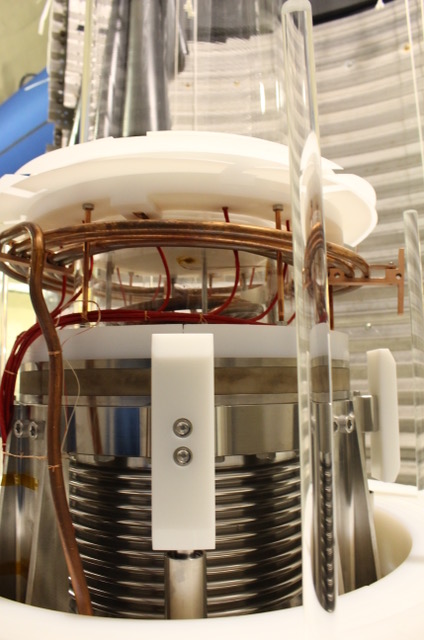
In bubble chamber experiments, a particle interaction transfers energy to a superheated fluid, causing a bubble to form as it boils. The PICO experiment uses several methods to identify events in the detector: there are cameras set up to capture bubbles, and there are piezos attached to the vessel that act as microphones listening for bubbles forming. The piezos are packages of piezoelectric crystals and they are extremely sensitive to movement. When they change shape, they create an electric signal. In PICO, the sound wave generated when a bubble forms is enough movement to alter the piezos, generating an electrical signal in the detector. The piezos are mounted all around the inner glass jar in PICO to make sure no events are missed.